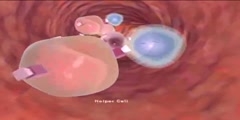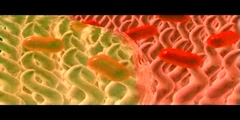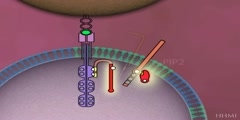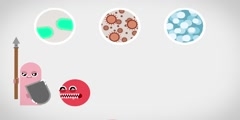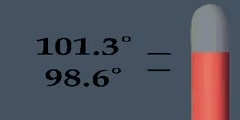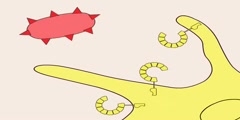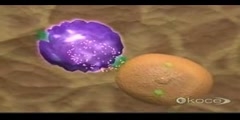The cellular immune response
The cellular immune response As the fruit picking was going on, Brian heard someone shout, “Bless you!†after a fellow fruit-picker let out a loud sneeze. Unbeknownst to poor little Brian, some of the air he was breathing in the orchard was now laden with particles of the influenza virus. While the humoral immune response is underway, some of the influenza viral particles will have been consumed by phagocytes and neutrophils while others would have began infecting other cells such as Brian’s epithelial cells. So, how does the immune system deal with these infected cells? By a battle plan called the cellular immune response. Like the humoral immune response, this is also divided into activation and effector phases. The activation phase begins when an antigen-presenting cell (APC) of the host organism encounters and attacks an invading virus. Meanwhile, other viruses look for nearby epithelial cells to infect. A lysosome containing digestive enzymes combines with the phagosome to process the antigens. The processed antigens combine with MHC class II proteins and are presented on the surface of the APC. The virus also infects Brian’s epithelial cells. Within the infected epithelial cells the virus is processed, attached to an MHC class I protein and is presented on the cell surface. A helper T cell (CD4+) recognizes the displayed antigen on the APC and binds to the MHC class II protein-antigen complex. The activated helper T cell releases chemical messengers such as the cytokine IL-2 and gamma interferon (IFN-g). The effector phase begins when activated cytotoxic T cells (CD8+) which were stimulated to proliferate by the cytokine IL-2, recognize the MHC class I protein-antigen complex on the infected epithelial cells. Cytokines also attract other killer T cells to the site of infection. The activated cytotoxic T cell binds to the MHC class I protein-antigen complex on the surface of the infected epithelial cell. The binding causes the cytotoxic T cell to release a potent chemical called perforin. Perforin perforates the cell membrane of the infected cells causing the cells to lyse (burst) and die. As the viral infection is brought under control, regulatory T cells turn off the activated cytotoxic T cells. Memory T cells remain behind to respond quickly if the same virus attacks again.
Channels: Scientific Animations
Tags: humoral
Uploaded by: tubeman ( Send Message ) on 07-09-2007.
Duration: 0m 0s

